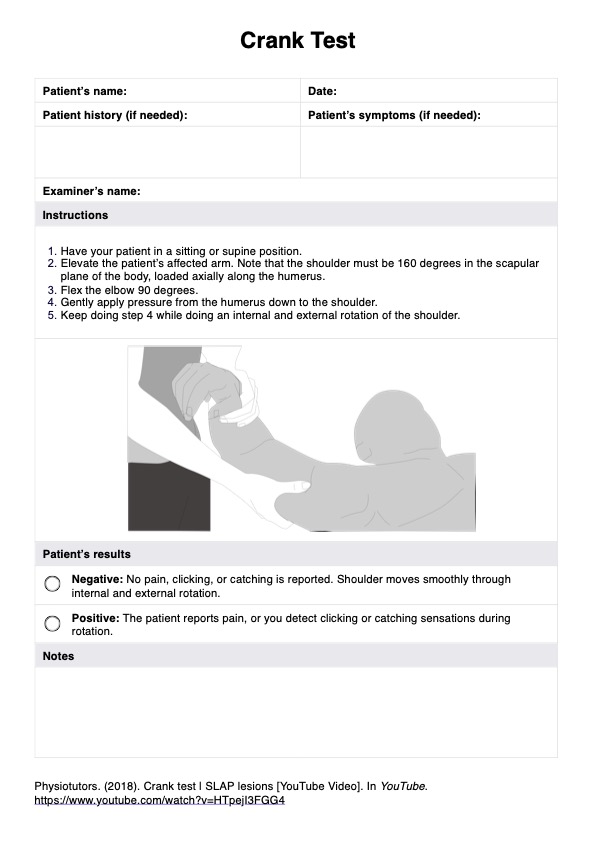You use the Crank Test by following the instructions provided in the template and using your observational skills to determine if your patient is positive for the test. For a more comprehensive step-by-step guide, refer to the “How does this Crank test work template” section above.

Crank Tests
Assess your patient for a glenoid labral tear with our free crank test guide and template. Click here to learn more!
Use Template
Crank Tests Template
Commonly asked questions
Two benefits are that it’s easy to administer and you can obtain results in minutes.
For a full list of the benefits of using the Crank Test and our template, please head to the “Benefits of these Free Crank Test templates” section above.
The Crank test checks the integrity of a patient’s glenoid labral and determines if a SLAP tear is the reason for the pain or clicking the patient is experiencing and hearing.
EHR and practice management software
Get started for free
*No credit card required
Free
$0/usd
Unlimited clients
Telehealth
1GB of storage
Client portal text
Automated billing and online payments











